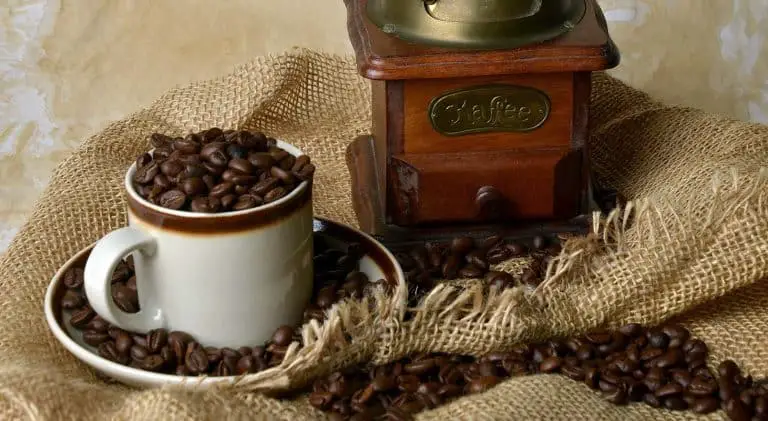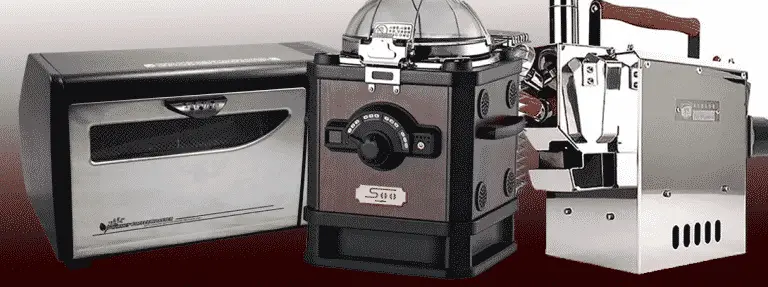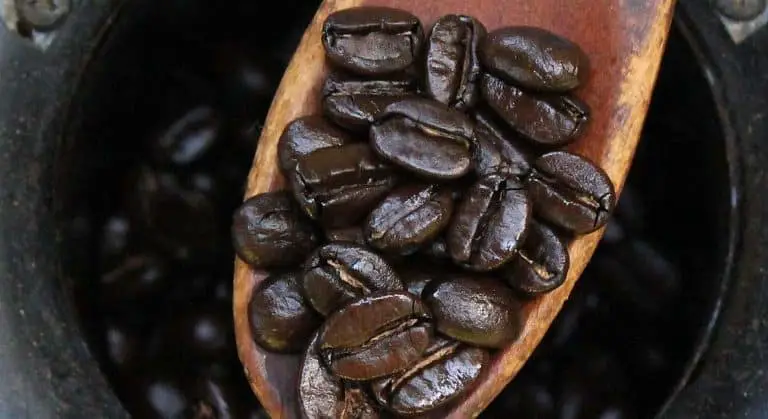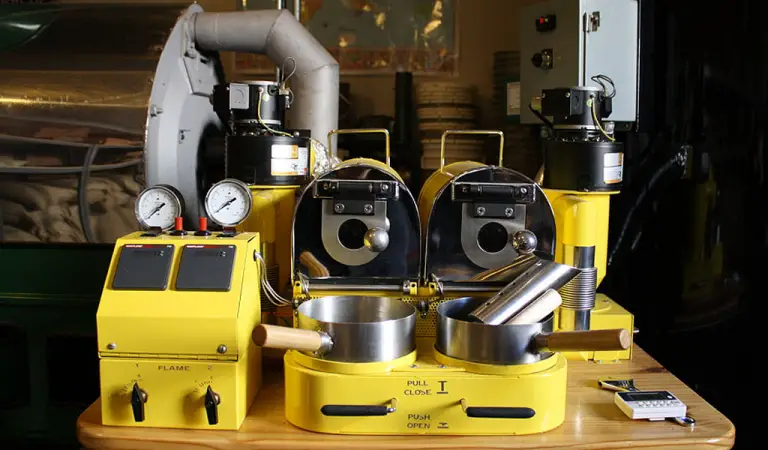The Best Japanese Coffee Makers for your Home
The Japanese are renowned for there attention to detail. When you experience a lovingly crafted bonsai tree or meticulously made sushi up close you will know what I mean. This attention to detail is also evident in Japanese coffee makers. In the West the preparation of coffee the not front and centre as it is in Japan.
The typical barista toils away behind a steamy espresso machine behind the counter, or you do in your kitchen at home. The coffee appears at the end of the counter or on a tray in your living room. In japan it is all one magnificent display of unique-and sometimes puzzling-apparatus. The brewing process is as important as the cup of coffee. Observing it is almost as satisfying as savoring the amazingly well crafted coffee.
The History of Japanese Coffee Equipment
Elaborate rituals have always exited around the drinking of tea in Japan. Once coffee became accepted some of that elegance was transferred to the early coffeehouses. Japanese coffee equipment is unique and interesting and sometimes can even look like lab equipment. Much of the early glassware for Japanese coffee machines was initially manufactured in lab glassware factories. There’s no accident that it looks the way it does.
How is Japanese Coffee Made
Unlike in Arab countries, there are no rigid traditions in how to drink coffee in Japan. The opposite is generally true with coffee seen as a grab and go drink. How they make coffee is the interesting and unique part of the Japanese coffee culture.
There are three types of Japanese coffee makers for home use:
- The siphon coffee maker
- The drip filter cone,
- The cold coffee drip machine
The very Japanese Siphon Coffee Maker

The Japanese siphon coffee maker was invented by Hario in the late 1800’s. It’s a very contained and clean way of brewing coffee. It has a unique design and is a Japanese classic, owned by many design people.
It’s the coffee lovers that value this machine most off all. It gives the utmost control to the brewing process, controlling the pressure as the air in the chambers expands.
Changing the water temperature, grind, quantity or timing will give different results and you can fine tune and control all aspects of the flavors and taste.
The upper and lower chambers of the pot remain sealed during the brewing process. Flavor is sealed in throughout the brewing retaining the subtle character of the beans. It is for this reason that I recommend a medium roast.
The design gives the utmost stability to the water temperature and the usual cloth filter avoids the by-products present in most paper filters. The result is a coffee brew of unmatched purity. A variety of burners are available.
How to use a Japanese Siphon Coffee Maker
It’s simple and fascinating and never loses its charm. Your guest will love the show.
- Add the desired amount of water to the lower chamber.
- Place the upper chamber with the filter on the lower chamber
- Light the alcohol burner and wait for the water to boil.
- The hot water will bubble into the upper chamber
- Add the ground coffee to the water, and mix well with the stirrer
- Let it stand for a while and stir again
- Extinguish the flame and as the air in the lower chamber cools it creates a low-pressure zone
- The coffee mixture water will be siphoned into the lower chamber through the filter
- Remove the upper chamber and it’s now ready to pour and enjoy.
The Hario Technica Syphon Coffee Maker is classic and beautifully designed. They are available in a range of sizes but I really like the classic one. You can check prices for the Hario Technica if you are interested on Amazon.
Japanese Coffee Drip Cones
The Hario V60

The Hario V60 is a cone-shaped drip coffee maker that uses a filter. It has become the industry standard for pour-over drip coffee makers. It’s designed to carefully regulate the flow of water to get the best flavor. It gets its name from the optimum angle of the cone which is 60 degrees.
From 1921, the Hario company has established itself as a trendsetter in the manufacture of glass products. Their name, Hario means King of Glass. The funny thing is that the V60 isn’t even made of glass at all, it’s made of porcelain.
When the specialty coffee started to become popular in the 1980’s immersion brewers were most common. Immersion brewing, like in the french press, relies on mixing the coffee ground with hot water first.
The designers of the V60 believed that the parabolic shape would help produce a clean tasting coffee. The first version was fabricated from wire. The current version is made from Arita Yaki ceramic which is a 4-century-old Japanese tradition.

The Haribo V60 is available made from porcelain, glass, metal and plastic. They come in a variety of colors. The unique features of the V60 are the parabolic shape of the sides and the curved fins on the sides of the cone.
It has a large hole at the bottom of the cone which allows the water to move through quite quickly. This prevents gasses like carbon dioxide from collecting in the coffee brew and affecting the flavor.
The flavor and strength of the coffee is regulated by the coarseness of the grind. The finer it is, the slower the water filters through and the coffee will be stronger. The filter also makes a difference and I swear by the classic cloth filters by Hario. Paper filters are available too but unlike the cloth filter, they can contain chemicals. Paper filters are much more convenient.
The most beautiful and timeless of these is the copper V60 which is available with a matching copper kettle and coffee measure. It’s timeless and beautifully designed and a great addition to any coffee lover’s collection.
The great think about the v60 is its portability. The metal ones are unbreakable and easy to travel with and take up almost no space. The copper V90 collection is the most beautiful but also the most expensive. So, if you want the taste of V60 coffee but don’t have the budget, opt for the lower cost plastic versions.
There are of course imitators who manufacture similar drip coffee cones. I find that the coffee I brew in my classic Haribo V60 is better than any of others I’ve tried. There are a huge variety of kettles available too. The V60 is surprisingly affordable, check on Amazon.
The Kalita Wave
The Kalita Wave Drip Cone , also Japanese, has become really popular with coffee aficionados. The Kalita has a flat bottom with three small holes to regulate the coffee flow. Some swear by it and as is supposed to give a smoother taste than the Haribo. There’s less room for error when brewing with the Kalita because the grind doesn’t affect the flow as much.
To each his own I suppose but I still prefer my classic V60 over the Kalita although some specialty coffee chains are changing over.

Kyoto Style Slow-Drip Coffee Makers
Cold brewed coffee is popular in warm weather months. It is made by steeping the coffee grounds in water for hours and then filtering out the coffee. The Japanese method of cold drip brewing is different.
The water is not mixed with the coffee but drips through the grounds very slowly. It uses low-temperature water, gravity and a lot of patience to brew a very flavorful and complex cold coffee. It only takes the flavor from the “top” of the bean, meaning only the most complex, sweetest flavors are in the final brew.
This avoids the complex gasses created by introducing heat into the coffee brewing process. And you can taste it. The slow, cold brew system of the Kyoto retains the true character of the roasted bean.
The Kyoto style drip coffee maker is a series of fragile, precariously stacked glass containers and tubes. This complex apparatus also referred to as “the Japanese Tower”, seems to be better suited to a chemistry lab rather than a café or kitchen. However, when you taste the coffee it brews you marvel and want one for yourself.
Unlike in the Italian tradition where the barista is anonymously huddled behind the steaming steel espresso machine, the Kyoto style drip machines are transparent. It’s fascinating to watch as the water drips slowly through the grind.
The Kalita Wave is a great solution and available at a really reasonable price on Amazon.
The Yama Glass Cold Drip Coffee Maker
A smaller version of the classic Kyoto style drip machines available on Amazon is the Yama Glass Cold Drip coffee maker. It’s perfectly sized for home use too as the original ones are usually made for cafes.
What I Liked
- Great tasting complex cold brewed coffee
- Simple set and forget system – only two variables – the coffee grind and the drip rate.
- A beautiful captivating process that you can observe for hours – a real conversation piece
What I Didn’t
- Brewing takes a long time
- Can only be used for iced coffees which is mainly the summer months
- It’s not meant to be moved around so it takes up space and can be quite big
- It’s fragile

Once it’s set up you’ll want to keep it where it is. And, it’s tall, measuring 3 or 4 feet high (90 – 120cm) and is assembled in place. But it’s beautiful and many coffee shops have them backlit display while they brew coffee. Nothing that brews coffee competes with aesthetics and delicate transparency of the Kyoto cold drip brewer.
How to Brew Japanese Cold Brew Coffee
The Kyoto consists of three glass chambers held by a tall usually wooden framework. The top container contains cold or iced water. An adjustable valve at the bottom regulates the drip rate. The middle chamber holds the ground coffee and is connected to the lower chamber by a separate spiral glass tube. The lower chamber holds the cold brewed drip coffee.
The valve is set to complete the brew in about 3 to 4 hours and the coffee is usually fine ground. Medium roast is recommended to retain the complex flavors of the beans. The tall units can be quite costly but there are a range of lower cost, compact options available.
In Conclusion
From the simple V60 to the towering Kyoto drip, there is a Japanese coffee making system for all tastes. At first glance, they are unusual until you realize that all coffee making equipment has the same purpose. That is, to make the best coffee brew by capturing the true character of the roasted bean.
Japanese coffee equipment simple in design and principle. No hissing steam, whirring pumps or pressure is required. It uses gravity or a gentle vacuum to coax the water over the coffee ground. And it’s all in the open to see. It’s as important to observe how it’s made as it is to drink and savor it. True to the Japanese tradition.
If you’re interested in Japanese coffee culture, check out this other article I’ve written just about the drip coffee makers. The Best Japanese Pour-over Drip Coffee Makers








